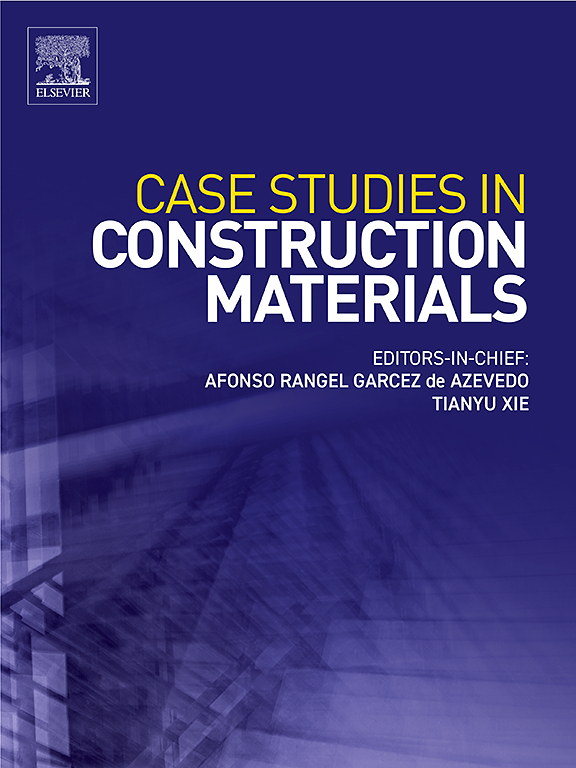珊瑚骨料混凝土在压剪荷载作用下的破坏机制:实验研究与中尺度模拟
IF 6.6
2区 工程技术
Q1 CONSTRUCTION & BUILDING TECHNOLOGY
引用次数: 0
摘要
珊瑚骨料混凝土(CAC)是岛屿和珊瑚礁建设的重要材料,其中结构经常受到压剪载荷。了解CAC在这种条件下的破坏机制是非常重要的。本研究采用实验与中尺度模拟相结合的方法,系统研究了不同压头角度对CAC力学性能的影响及其破坏机制。实验结果表明,当加载速率为1 mm/min时,在0°~ 15°范围内,峰值正应力保持相对稳定(44.3 ~ 47.0 MPa)。但当倾角增大到25°时,峰值应力急剧下降28.8 %(至31.9 MPa),并伴随剪切带的形成和骨料断裂,从压缩破坏向剪切破坏过渡。应力不变破坏准则能准确表征其非线性变化,相关系数为0.997。此外,比较了两种碰撞检测算法的效率,这是生成中尺度模型所必需的。中尺度模拟结果表明,当压头角度为5°时,界面过渡区(ITZ)的损伤以压缩破坏开始,而当压头角度为25°时,剪切应变导致界面过渡区单元破坏,导致斜裂纹通过骨料扩展,从而导致承载能力的突然丧失。仿真结果与实验数据吻合较好,验证了模型的可靠性。本文章由计算机程序翻译,如有差异,请以英文原文为准。
Failure mechanisms of coral aggregate concrete under compression-shear loading: Experimental investigation and mesoscale simulation
Coral aggregate concrete (CAC) is a vital material for island and reef construction, where structures are frequently subjected to compressive-shear loading. Understanding the failure mechanisms of CAC under such conditions is of urgent importance. This study systematically investigated the effects of different indenter angles on the mechanical properties and failure mechanisms of CAC through combined experimental and mesoscale simulation approaches. The experimental results demonstrate that under a constant loading rate of 1 mm/min, the peak normal stress remained relatively stable (44.3–47.0 MPa) within the 0°-15° range. However, when the angle increased to 25°, the peak stress dropped sharply by 28.8 % (to 31.9 MPa), accompanied by a transition from compressive failure to shear failure along with the formation of shear bands and aggregate fracture. The nonlinear variation was accurately characterized by the stress invariant failure criterion, yielding a correlation coefficient of 0.997. Furthermore, the efficiencies of both collision detection algorithms, which are essential for generating mesoscale models, are compared. Mesoscale simulations reveal that at 5° indenter angle, damage initiated as compressive failure in the interfacial transition zone (ITZ), whereas at 25°, shear strain led to ITZ element failure, resulting in oblique crack propagation through aggregates and consequent abrupt loss of load-bearing capacity. The close agreement between simulation results and experimental data validated the reliability of the model.
求助全文
通过发布文献求助,成功后即可免费获取论文全文。
去求助
来源期刊

Case Studies in Construction Materials
Multiple-
CiteScore
7.60
自引率
19.40%
发文量
842
审稿时长
63 days
期刊介绍:
Case Studies in Construction Materials provides a forum for the rapid publication of short, structured Case Studies on construction materials. In addition, the journal also publishes related Short Communications, Full length research article and Comprehensive review papers (by invitation).
The journal will provide an essential compendium of case studies for practicing engineers, designers, researchers and other practitioners who are interested in all aspects construction materials. The journal will publish new and novel case studies, but will also provide a forum for the publication of high quality descriptions of classic construction material problems and solutions.
 求助内容:
求助内容: 应助结果提醒方式:
应助结果提醒方式:


